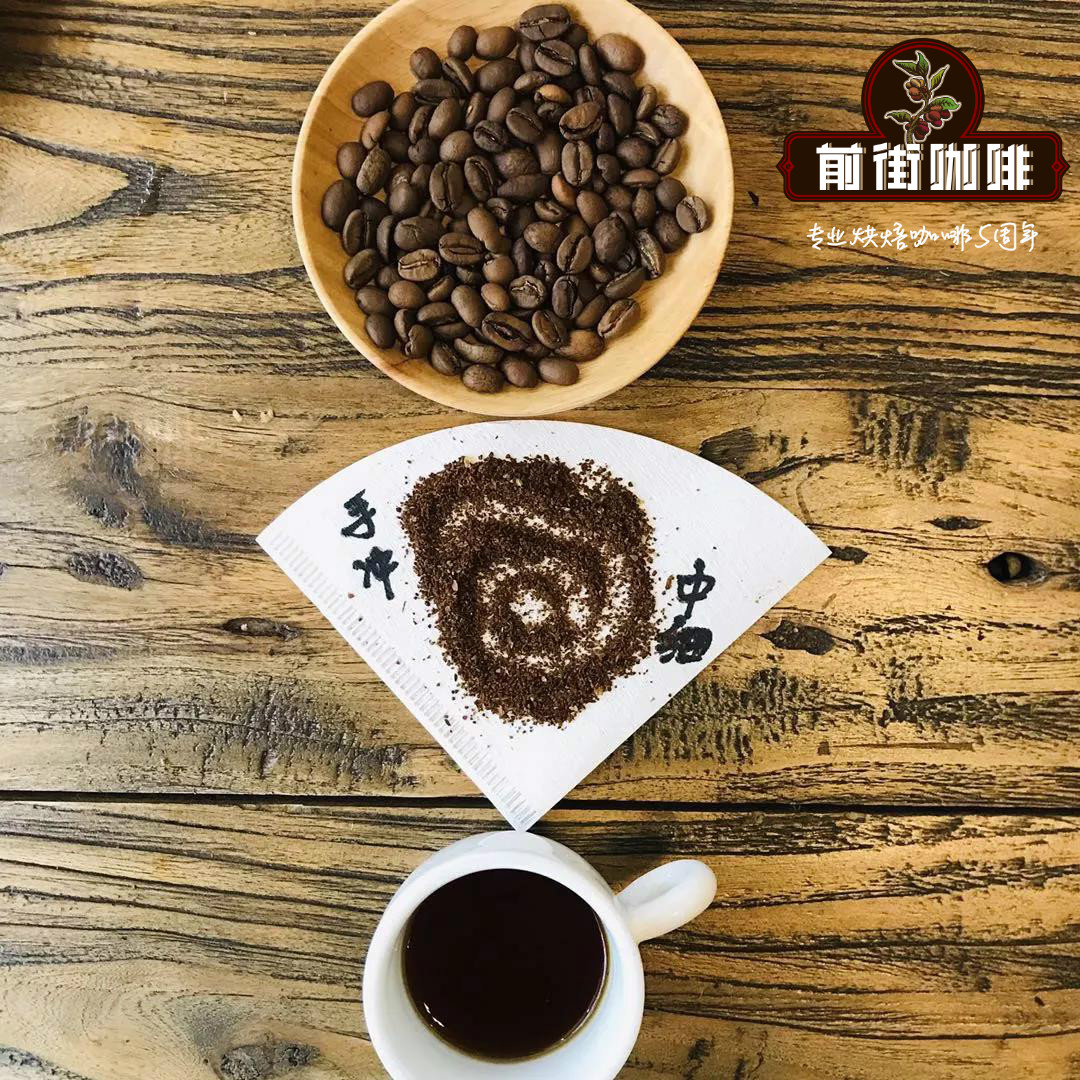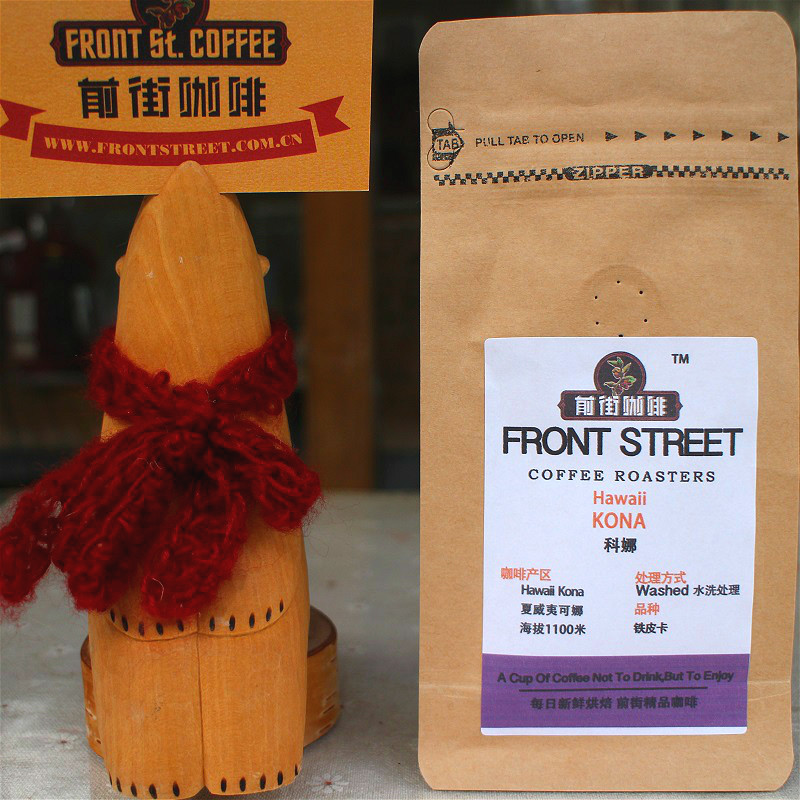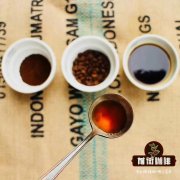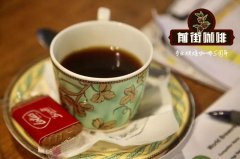One of the most expensive coffee on the market in KONA-, Hawaii, second only to Blue Mountain in price

Professional coffee knowledge exchange more coffee bean information please follow the coffee workshop (Wechat official account cafe_style)
KONA comes from Hawaii, the largest island of Hawaii, and is located in the KONA area on the hillside of the 4200-meter-high Mauna Kea on the Shanxi side. The tropical rain forest has abundant annual rainfall. Coffee trees are planted on black gravel of crushed volcanic rock, and the local natural environment is quite suitable for the cultivation of coffee beans, so high-quality coffee is cultivated.
KONA's low output and small-scale refinement factories produce high-quality raw beans, so the price is high, second only to Jamaican Blue Mountain Coffee.
Bouquet: red wine-like color with citrus and dried fruit aromas, vanilla aromas and sucrose aromas
The obvious acidity in the taste makes people feel fresh and bright, and the aftertaste can feel the flavor of citrus fruits.
Consumers who have traveled to Hawaii must know that KONA coffee bought in Hawaii tourist areas is not cheap, and many of them are just KONA mixed coffee (KONA beans account for only part of it).
Hawaii is a beautiful seafood. Since the 18th century, most of the coffee has been grown in Kauai and Hawaii. Most of the coffee is planted in Hawaii and Hawaii. It has the ideal climate and soil to deal with the process, and the coffee bean takeout is perfect. But the limited planting and the high cost of American workers are all the reasons for the popularity of Kona beans. But the perfectly dry and fruity Kona coffee cannot be replaced by any other coffee.
Coffee makers often compare the Kona coffee produced in Hawaii with the yangshan coffee produced with tooths. all kinds of coffee have mild and moderate acidity to make the fruit sweet, but the quality control of Kona coffee coffee makes it possible for Kona coffee to be maintained at a high level, unlike Shan Coffee, which occasionally has a bad sound.
Compared with the size of gold mane, the color of Kona beans is more brown than that of gold mantle.
The English name of Hawaiian beans is "Macadamia". Also known as the Australian fruit, because its place of origin is actually in Australia. It is 2 to 12 meters high, and the Hawaiian beans are the colored peas that fall to the ground. It is really a hard wooden ball with a clear point and contains 1 or 2 eggs.
When the Hawaiian bean falls to the ground, it will explode and change its color. Within four days, the seeds of Hawaiian beans will explode and turn brown and gray, which is the best taste of Hawaiian beans during these days. If it is placed for too long, the outside will become too black and the nuts will lose the creamy taste. At this time, it can not be called first-grade Hawaiian beans.
As for "Hawaiian coffee", in the early days, due to the pursuit of the Japanese and the successful marketing of the Kona producing area of Big Island (commonly known as Hawaiian coffee), most consumers mistakenly thought that Kona was Hawaiian coffee. In fact, the so-called Kona coffee refers to coffee produced in the Kona area. (there is also 10%Kona coffee that mixes coffee beans from 10%Kona regions with 90% of other regional coffee beans.)
At present, Hawaiian coffee, which is common in the market, has coffee bars in addition to the kona area of Daiyang, including Maoyi, Cafe, and Coffee Coffee. The common Hawaiian coffee includes different varieties such as Typica, Mocca and Catuai.
However, Kona Coffee is still one of the most expensive coffee on the market. According to the regulations of the Hawaiian Agriculture Department, only coffee on the slopes of Hualalai and Mauna Loa in Big Island and Kona can be regarded as Kona Coffee. Hawaii has a special taste because of its sunny mornings all year round, sunny and rainy afternoons, gentle nights all day, and volcanic soil rich in minerals.
The biggest threat to Kona Coffee in recent years comes from the damage caused by the coffee borer (Hypothenemus hampei). The Hawaiian Ministry of Agriculture has announced that all raw beans must be fumigated with methane bromide or another six-step procedure before opening a big restaurant.

Important Notice :
前街咖啡 FrontStreet Coffee has moved to new addredd:
FrontStreet Coffee Address: 315,Donghua East Road,GuangZhou
Tel:020 38364473
- Prev

We can't drink Sprite in'82, so how about an 82-year-old Mantenin?
Professional coffee knowledge exchange more coffee bean information Please follow the coffee workshop (Wechat official account cafe_style) has heard that it does not matter if the coffee bean is kept for a long time, it will become old coffee beans and taste better. In fact, this is a rather irresponsible statement. Beans will rot after they have been kept for a long time, changing from fresh cyan to white, then to yellow, becoming dull or even dull.
- Next

A bean with a strong smell of red wine-the Costa Rican sun
Professional coffee knowledge exchange more coffee bean information Please pay attention to Coffee Workshop (Wechat official account cafe_style) Coffee industry in Costa Rica began to develop since the middle of the 18th century, is the first country where coffee was introduced to Central America to grow, with a long history, therefore, the coffee organization is fully equipped from production to marketing system. Costa Rican coffee has always been popular in terms of quality and quantity.
Related
- Detailed explanation of Jadeite planting Land in Panamanian Jadeite Manor introduction to the grading system of Jadeite competitive bidding, Red bid, Green bid and Rose Summer
- Story of Coffee planting in Brenka region of Costa Rica Stonehenge Manor anaerobic heavy honey treatment of flavor mouth
- What's on the barrel of Blue Mountain Coffee beans?
- Can American coffee also pull flowers? How to use hot American style to pull out a good-looking pattern?
- Can you make a cold extract with coffee beans? What is the right proportion for cold-extracted coffee formula?
- Indonesian PWN Gold Mandrine Coffee Origin Features Flavor How to Chong? Mandolin coffee is American.
- A brief introduction to the flavor characteristics of Brazilian yellow bourbon coffee beans
- What is the effect of different water quality on the flavor of cold-extracted coffee? What kind of water is best for brewing coffee?
- Why do you think of Rose Summer whenever you mention Panamanian coffee?
- Introduction to the characteristics of authentic blue mountain coffee bean producing areas? What is the CIB Coffee Authority in Jamaica?

